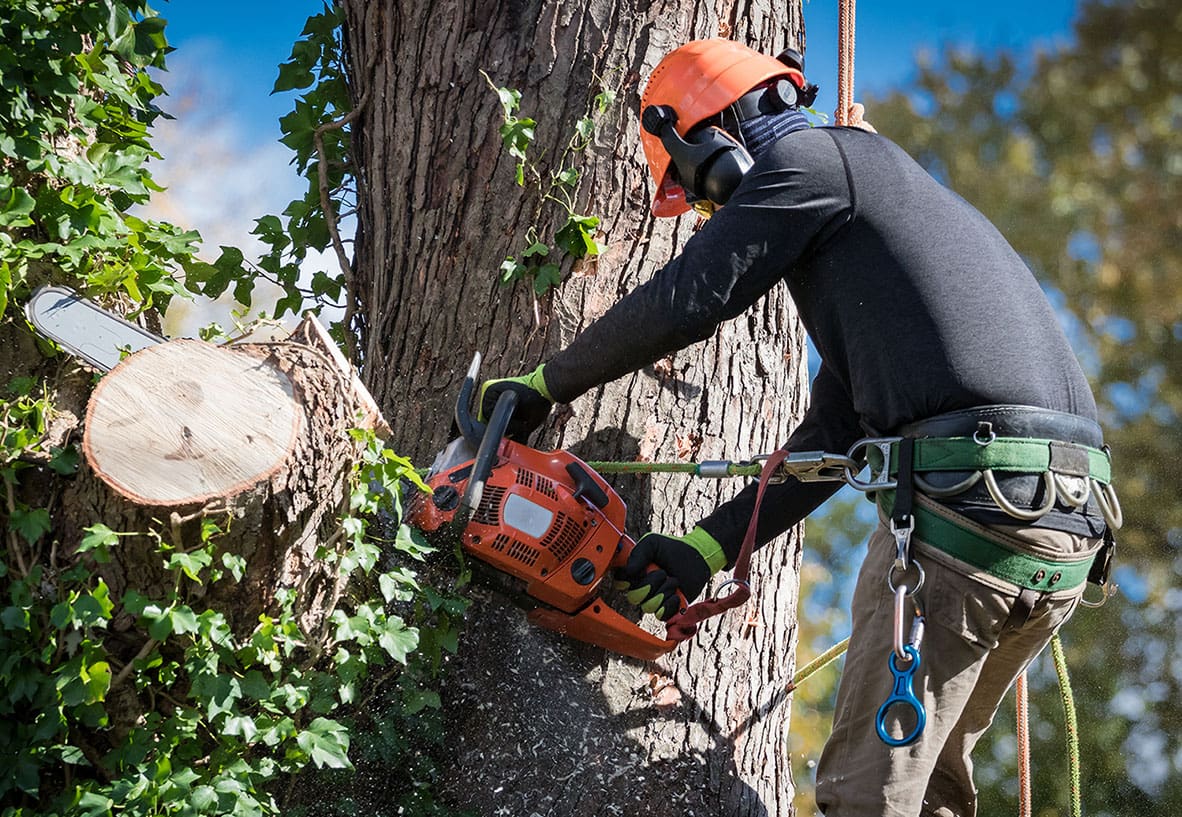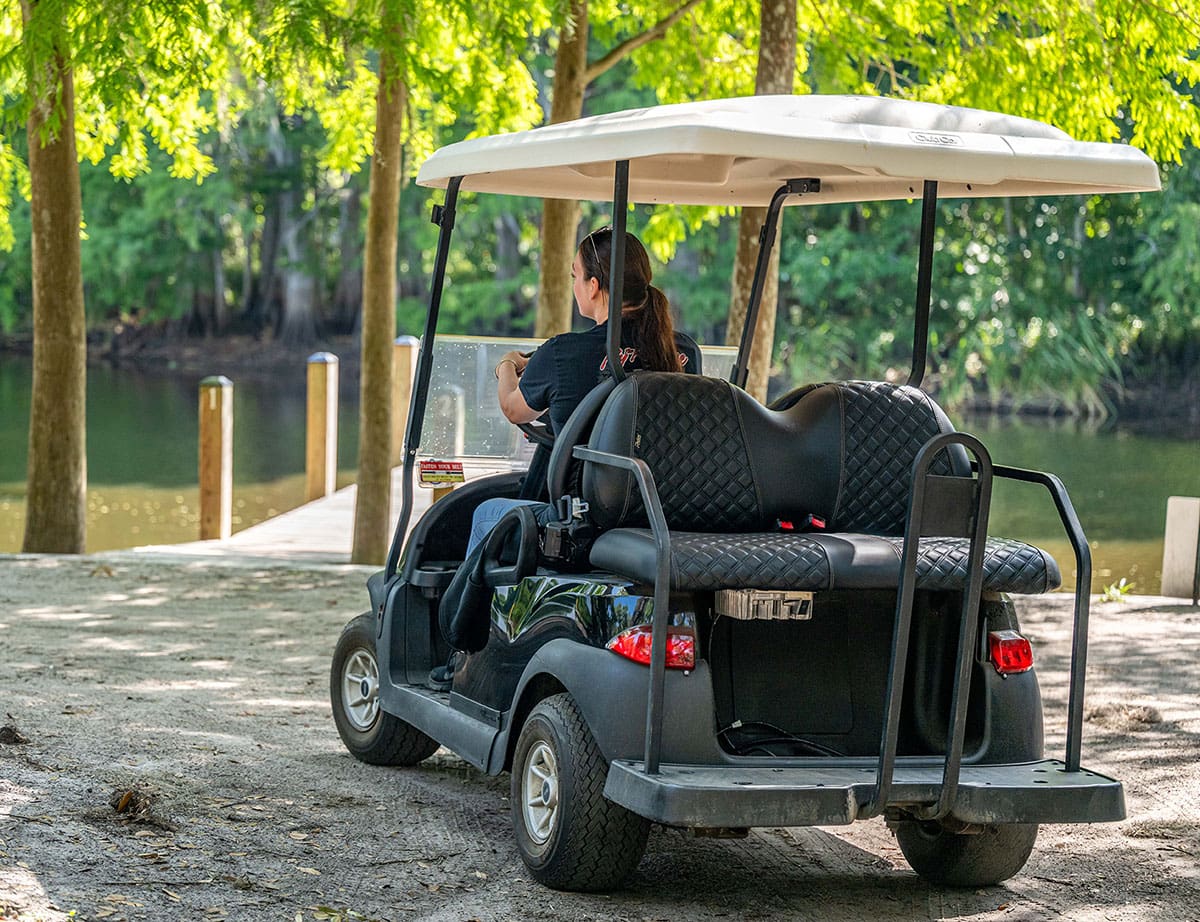You don’t think much about the trees in your yard — until one crashes onto your fence or driveway. Whether it’s due to a sudden storm, disease, or just old age, a fallen tree can create a situation that is stressful and costly.
One of the first things most homeowners ask is: ‘How does homeowners insurance tree removal coverage work?’ The short answer? Sometimes.
It depends on a few key factors — why the tree fell, what it damaged, and what your policy includes. In this article, we’ll explain when insurance typically covers tree removal, when it doesn’t, and how to reduce your risk going forward.
The basics of homeowners insurance and landscaping
Most homeowners insurance policies are designed to protect against sudden, unexpected damage — things like fire, theft, hail, or strong winds. It usually covers your house (the “dwelling”), other structures like garages or fences, your personal belongings, and additional living expenses if you must relocate temporarily.
But what about the trees, plants, and landscaping?
Landscaping is typically only covered under specific circumstances. A standard policy might help pay for damage to trees or shrubs caused by certain perils, but it rarely covers their removal unless something else is damaged.
Some policies include a landscaping endorsement that provides limited coverage for tree and shrub damage, while others only cover debris removal under certain circumstances. That’s where things can get tricky — and why knowing your policy details really matters.
When does homeowners insurance cover tree removal?
Most policies only offer limited tree removal insurance coverage, usually triggered by damage to a structure or blockage of a driveway. Homeowners insurance may pick up the tab for tree removal when specific conditions are met:
The tree damages a covered structure.
- If a tree falls and hits your home, garage, fence, or other insured structure, your policy will likely cover both the home repairs and debris hauling — a common example of when insurance covers tree removal.
Example: A storm knocks over a tree, damaging your roof. Your policy may pay to fix the roof and remove the tree.
The tree blocks a driveway or handicap-access ramp.
- Even if there’s no structural damage, your policy may help with tree removal if the fallen tree blocks your driveway or a ramp used for accessibility.
Note: Coverage is typically capped at a flat $500–$1,000 per incident, not per tree — so if multiple trees fall, you may still be limited to that single reimbursement amount.
The tree fell due to a covered peril.
- If the tree fell because of a covered event — like wind, hail, lightning, fire, vandalism, or even the weight of ice or snow — your homeowners insurance may help pay for debris removal.
Example: Lightning strikes a towering pine, splitting it in half. The broken limb shatters your deck railing. Both the structural damage and the cost to haul away the debris would be covered.
When is tree removal not covered?
Not all tree-removal costs are created equal. Insurance companies often deny coverage when:
The tree was dead or diseased
- If the tree was already in bad shape or known to be dead, diseased, or structurally unsound — and you failed to have it removed — your claim may be denied for negligence or maintenance issues
Example: You’ve noticed extensive rot at the base of your maple for years, but never called an arborist. When it finally collapses, the insurer could argue the damage was preventable.
The tree didn’t hit anything
- If a tree falls in your yard but doesn’t damage anything — no structures, no fences, no driveways — you’re typically responsible for the removal. Even if the fall was storm-related, insurance usually won’t cover the cost unless something was damaged or access was blocked.
Tip: Many insurers define “debris removal” narrowly, requiring actual structural damage or obstruction before they’ll pay. Be sure to check how this is defined on your homeowners insurance policy.
The peril isn’t covered
- Damage from floods, earth movement, hurricanes, and tornadoes may not be covered under a standard homeowners policy. You’ll need additional riders or separate coverage for those events.
Example: A hurricane triggers a tornado that brings down trees, but if your policy excludes windstorm coverage, you’d be responsible for the removal costs.
Can tree removal be covered as a preventive measure?
Homeowners insurance typically does not cover the cost of removing a tree as a preventative measure, even if a certified arborist determines it poses a future risk. Why? Homeowners’ insurance is designed to cover sudden, accidental losses caused by specific, covered perils — not to help prevent future problems.
Even if an arborist warns that a tree is unstable or diseased, most homeowners insurance policies won’t pay to remove it before it causes damage. Preventive maintenance is considered the homeowner’s responsibility, much like fixing a leaky roof before it causes water damage.
Rare exceptions when preventive removal might be covered include:
- Your policy includes extended landscaping coverage or a special rider
Some high-value homeowners policies or add-ons may include tree maintenance or preventive removal, but this is rare, and usually limited to large properties or unique coverage needs. - A city or municipality requires you to remove a hazardous tree
If local authorities mandate removal due to public safety concerns (and there are potential fines involved), your insurer might help with the cost. Still, most policies won’t cover it unless the tree has already caused damage. - The removal is part of storm mitigation after a covered loss
Let’s say one tree falls during a covered storm. If another tree on your property is in similar condition and poses an immediate risk, your insurance may approve its removal, especially if a claims adjuster recommends it.
Bottom line: Insurance companies expect you to proactively care for trees to prevent foreseeable damage. So if you’ve been advised a tree is risky, it’s best to remove it before it falls — even if it means paying out of pocket.
What does tree removal cost in the USA?
Tree removal costs can vary widely depending on local labor costs, the size and condition of the tree, and how complex the job is. While it’s hard to pinpoint exact costs for every state, national averages offer a helpful benchmark.
Average tree removal costs
- Small trees (under 30 feet): $150–$500
- Medium trees (30–60 feet): $500–$1,200
- Large trees (60–80 feet): $800–$1,500
- Extra-large trees (80+ feet): $1,000–$2,000+
What affects the cost of tree removal?
Tree removal isn’t one-size-fits-all. What you pay can vary quite a bit depending on a few key factors:
- Size and height: Bigger trees take more time, labor, and heavy equipment to remove — which usually means a bigger bill.
- Type of tree: Some trees, like oak or pine, have dense wood or tricky branch structures that make them harder (and pricier) to take down.
- Where the tree is located: If it’s close to your house, a fence, or power lines, crews have to be extra careful — which can add to the cost.
- How easy it is to reach: If the tree is tucked behind a shed or in a hard-to-access spot, it may take longer to remove.
- Condition of the tree: Dead or diseased trees can be more dangerous to work on, which often raises the price.
- Emergency work: Need it gone ASAP after a storm or during off-hours? Expect to pay a premium for urgent service.
- Stump removal: Removing the stump is usually extra — anywhere from $150 to $500, depending on the size and how it’s removed.
How much will insurance pay for tree removal?
Most homeowners’ policies cap debris removal in one of two ways:
- Per-Tree Limit: Often between $500 and $1,000 per tree.
- Aggregate Limit: A total cap per claim (for example, $1,000–$2,000 maximum for all debris removal).
And don’t forget — you’re still responsible for your deductible before insurance kicks in. Any costs above these limits — and any applicable deductible — will be your responsibility. For instance, if your policy pays up to $1,000 per tree but the contractor’s bill is $1,500, you’ll cover the extra $500 plus your deductible.
Proactive tips to prevent tree-related insurance surprises
You don’t have to wait for disaster to strike. Here are steps to help ensure you’re covered when a tree comes down:
- Annual Inspections & Regular Tree Maintenance
Hire a licensed arborist to inspect and prune trees annually. Removing dead limbs and unhealthy trees reduces risk and strengthens the case that damage was sudden and accidental, not the result of neglect. - Document Your Landscaping
Take photographs and keep up-to-date records of all major tree work. If a claim arises, you’ll have evidence that you maintained your trees responsibly. Keep records — photos, invoices, emails — so you can show your insurer you’ve been proactive - Schedule Annual Policy Reviews
Work with a broker to review your homeowners insurance policy limits, including endorsements for landscaping. If you have a large lot or many mature trees, you may need a higher debris-removal limit or a specific landscaping rider.
Homeowners insurance & fallen trees: What to expect
If you need to file a ‘tree falls on house’ insurance claim, follow these steps to streamline the process:
- Ensure Safety First: Make sure everyone is safe and exit the home if needed. Evacuate if the tree has compromised structural integrity. Keep family and pets clear of the danger zone.
- Document the Damage: Take photos and videos of the fallen tree, any structural damage, and obstruction. Keep receipts for any emergency repairs to prevent further damage (tarping a roof, for instance).
- Contact Your Insurer Immediately: Report the claim and share your documentation. Ask about your debris-removal coverage limits and deductible.
- Bring in a Pro (and Save Receipts): An arborist can provide a professional assessment of tree health, the cause of failure, and an estimate for removal. This can strengthen your claim if the insurer questions whether the fall was due to a covered peril. If you’re unsure who to call, your insurance broker can help you find a vetted, reliable contractor.
A neighbor’s tree vs. your tree: Who’s responsible?
What happens if your neighbor’s tree falls onto your property? It depends on whether the incident was an “Act of God” — meaning no one was at fault — or the result of negligence.
If a healthy tree comes down during a storm, it’s typically considered an Act of God. In that case, each homeowner handles the damage on their own property through their own insurance policy.
But before paying out a claim, your insurer may look into whether the neighbor was negligent.
- If they knew (or should have known) the tree was dead, diseased, or unstable — and didn’t do anything about it — you may be able to file a claim against their insurance instead.
- The same goes in reverse: if your neglected tree damages a neighbor’s home, and you’d been warned about its condition, you could be held liable.
When in doubt, talk to a property insurance professional. They can help you sort out responsibility, file the right claim, and avoid disputes. And as always, good documentation and open communication with your neighbor go a long way.
Tree trouble? Let’s make sure you’re covered.
So, does homeowners insurance cover tree removal? It can — under the right circumstances.
- If the fall was caused by a covered peril and led to damage or obstruction, you may find tree removal covered by insurance — though limits and deductibles still apply.
- But if the tree was poorly maintained, didn’t cause any damage, or you’re removing it as a precaution, you’ll most likely be paying out of pocket.
That’s why it’s important to know exactly what your policy includes — and where it might fall short. At The Baldwin Group, our home insurance specialists can walk you through your coverage, help identify any gaps, and shop the market for a policy that fits your home, lifestyle, and budget.
It’s quick and easy to get started. Request a free, no-obligation quote online or call 813.939.5288 to speak with a property insurance consultant today.
For more information
We’re ready to help when you are. Get in touch and one of our experienced Baldwin advisors will reach out to have a conversation about your business or individual needs and goals, then make a plan to map your path to the possible.
This document is intended for general information purposes only and should not be construed as advice or opinions on any specific facts or circumstances. The content of this document is made available on an “as is” basis, without warranty of any kind. The Baldwin Insurance Group Holdings, LLC (“The Baldwin Group”), its affiliates, and subsidiaries do not guarantee that this information is, or can be relied on for, compliance with any law or regulation, assurance against preventable losses, or freedom from legal liability. This publication is not intended to be legal, underwriting, or any other type of professional advice. The Baldwin Group does not guarantee any particular outcome and makes no commitment to update any information herein or remove any items that are no longer accurate or complete. Furthermore, The Baldwin Group does not assume any liability to any person or organization for loss or damage caused by or resulting from any reliance placed on that content. Persons requiring advice should always consult an independent adviser.






